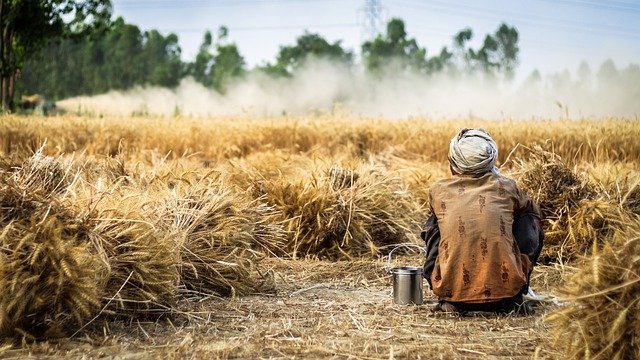This Ancient Agricultural Method Helps Farmers Fight Climate Change & Increase Income
Farmers from several Indian states have taken up agroforestry, which is the practice of integrating trees and shrubs with crops and livestock. Researchers weigh in on why this is a promising solution to agricultural crisis and climate change.

“The climate catastrophe timer is going to go off, and we don’t have much time,” reads the 2021 IPCC report. With a growing global population and changing dietary habits pushing up food consumption, agriculture is one of the key sectors where reform is required. So, we cannot afford to put climate security needs on the backbench for the sake of economic progress.
The global dilemma of food insecurity is exacerbated by agriculture’s acute sensitivity to climate change, which is already having a detrimental impact, considering rising temperatures, increased weather unpredictability, shifting agroecosystem boundaries, invasive crops and pests, and more frequent extreme weather events. Climate change is affecting agricultural yields, the nutrition quality of main grains, and livestock output on farms. Significant adaptation expenditures have become necessary to sustain existing yields and enhance production and food quality to fulfil demand.
It has become imperative that Climate-Smart Agriculture (CSA), i.e. sustainable agriculture, techniques be implemented. Agroforestry is one such promising solution for India’s agriculture. It is the practice of integrating trees and shrubs with crops and livestock.
It is a long-term agricultural strategy that can help farmers by boosting production, restoring soil balance, enhancing profitability, and giving other revenue streams. It can also assist in moderating climate change by regulating the microclimate, protecting natural variety, sequestering carbon, holding rainwater, and reducing soil erosion. Agroforestry is thought to efficiently fulfil 9 of the 17 Sustainable Development Goals (SDGs) linked to poverty and hunger reduction, climate change, ecological balance, responsible consumption, and enhancement of agricultural productivity.

An example of the benefits of agroforestry can be seen in the state of Assam where Balipara Foundation has been running an agroforestry programme in Baligao Green Village, since 2020, with only two key requirements – 1 bigha clear land and water.
The organisation is teaching agroforestry to the villagers in their available household farmland.
In the agroforestry model, Balipara has taken up seven-layer crops with moringa tree in the first layer, then papaya, lemon and king chilli and between these crops in empty patches, turmeric, ginger and sweet potato.
Locals find the method of farming extremely beneficial as soil fertility is preserved, the effort is reduced, farming takes place throughout the year, the farmers don’t need to replant for 4-5 years after one plantation, and income also increases with the frequent agricultural yield. The concept maximises utility by properly utilising soil, water, and sunshine to thrive without human intervention, creating abundant food, and healthy growth, and contributing to a balanced environment.
Recognising the potential of agroforestry in addressing a variety of developmental and environmental goals, India established a National Agroforestry Policy in 2014 and later the Sub-Mission on Agroforestry (SMAF), under the National Mission for Sustainable Agriculture (NMSA) in 2016-17. The policy intends to fulfil the rising need for lumber, food, fuel, fodder, fertiliser, and fibre by expanding the area under agroforestry while also creating jobs and producing cash. Following this, several states began implementing agroforestry.

Karnataka promotes agroforestry through programmes such as Krishi Aranya Protsaha Yojana [KAPY], in which nearby departmental nurseries supply seedlings to farmers at reduced prices. Even dry and semi-arid regions in the state are slowly shifting toward agroforestry, particularly on big farms, due to the resistance of trees to climate unpredictability, cheap maintenance, increased revenue, and state support.
Similarly, Haryana is an example of how weak forest and natural resources, with about 3.5% of its land under forest and more than 80% under agriculture, can sustain the nation’s food and wood security through agroforestry. The Yamunanagar district became the country’s plywood capital by getting wood mostly from farmlands and giving farmers high productivity and short rotation of seedlings of Eucalyptus and Poplar. As a result, farmers’ income have been supplemented by farm wood-based production in addition to agricultural products, and the Indian plywood market reached Rs 195.8 billion in FY 2021-22.
Apart from Karnataka and Haryana, Odisha, Punjab, Uttar Pradesh and Maharashtra have also been slowly scaling up their agroforestry practice.
However, there is a need for State intervention to further encourage farmers to adopt the practice.
Farmers find it difficult to adopt a new method that requires large resources, technical knowledge, and uncertain results. Furthermore, a lack of sufficient high-quality planting material, insufficient market facilities or infrastructure, and inadequate institutional support all pose challenges to agroforestry methods.
While the National Agroforestry Policy of 2014 was a good start, active state participation and effective institutional structures are more needed to incentivize farmers and teach them the efficient practice of agroforestry. NGOs and organisations such as Balipara, and Assam can play a vital role in assisting the government in this endeavour.
Written by Bhamini Rathore; Edited by Yoshita Rao
Sources:
IPCC
CSA Guide
Balipara Foundation
Agroforestry initiative in India could help farmers earn all year in a more eco-friendly way; Published by Mongabay on 20 September 2021
IMARC
This story made me
- 97
- 121
- 89
- 167
Tell Us More
We bring stories straight from the heart of India, to inspire millions and create a wave of impact. Our positive movement is growing bigger everyday, and we would love for you to join it.
Please contribute whatever you can, every little penny helps our team in bringing you more stories that support dreams and spread hope.



















